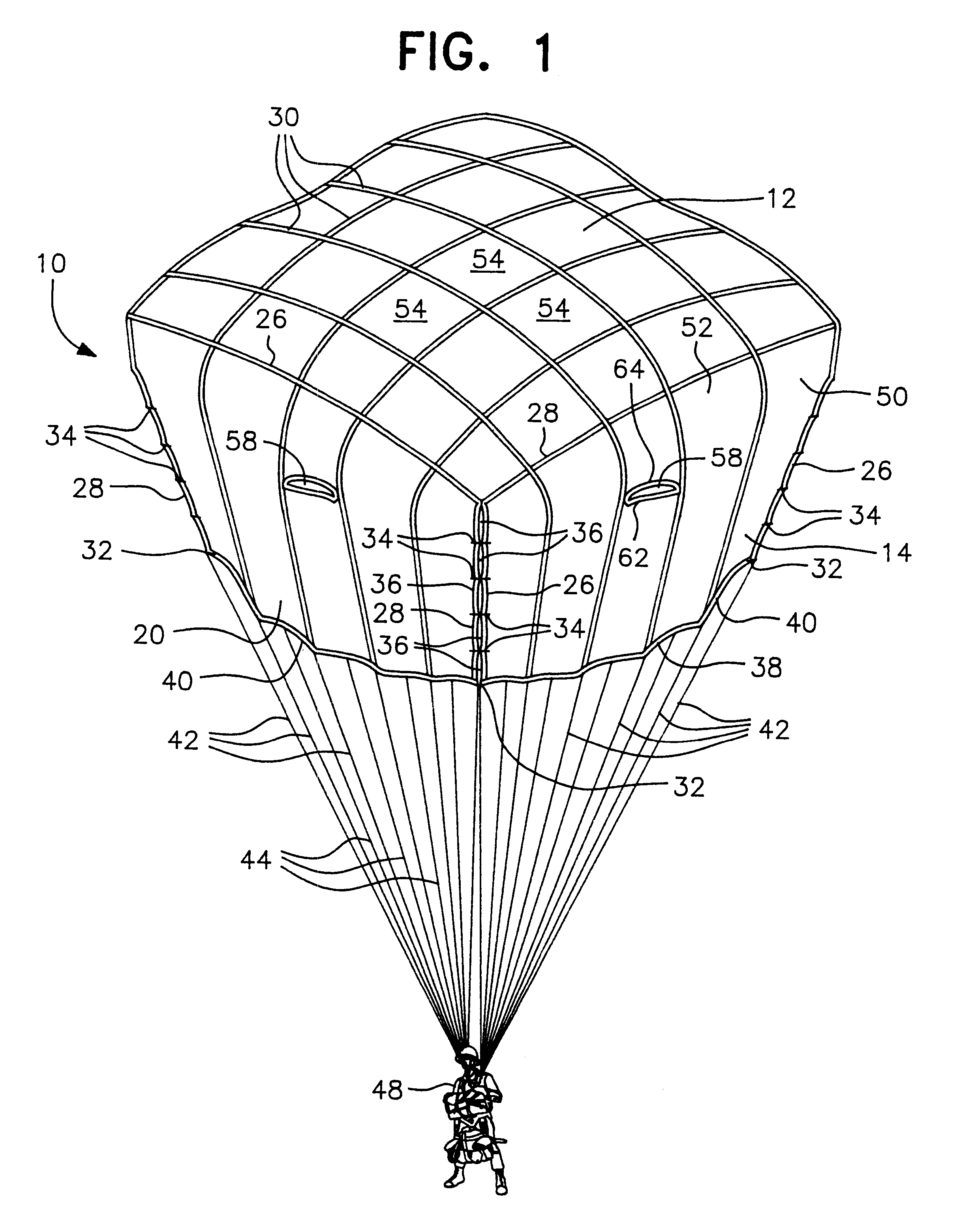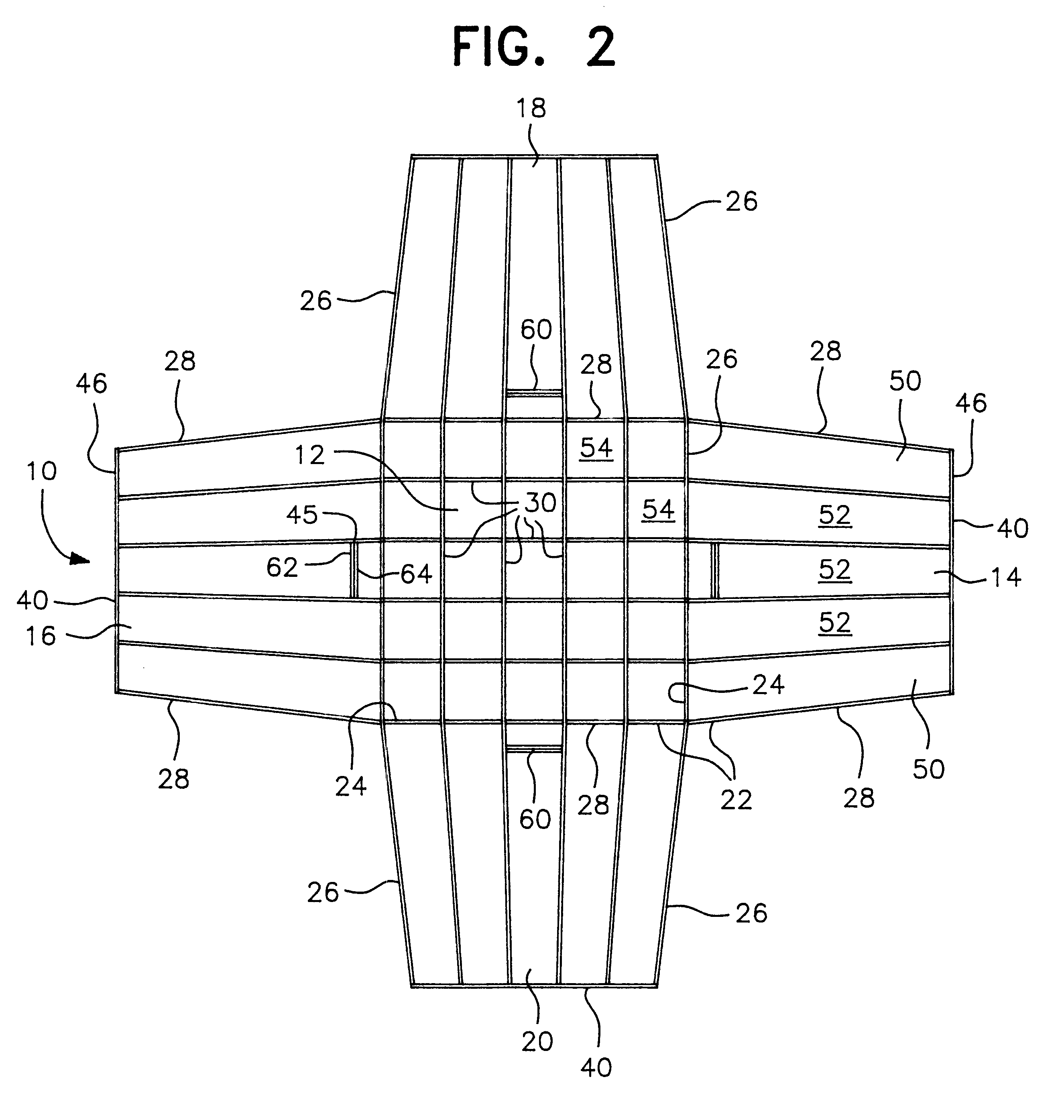Cruciform parachute with arms attached
a technology of cruciform or cross-sectional parachutes and arms, which is applied in the field of parachutes, can solve the problems of long time constant of pendulum motion once initiated, increase the cost of equipment, so as to overcome the stability and oscillation problems
- Summary
- Abstract
- Description
- Claims
- Application Information
AI Technical Summary
Benefits of technology
Problems solved by technology
Method used
Image
Examples
Embodiment Construction
Although only three preferred embodiments of the invention are explained in detail, it is to be understood that the embodiments are given by way of illustration only. It is not intended that the invention be limited in its scope to the details of construction and arrangement of components set forth in the following description or illustrated in the drawings. Also, in describing the preferred embodiments, specific terminology will be resorted to for the sake of clarity. It is to be understood that each specific term includes all technical equivalents which operate in a similar manner to accomplish a similar purpose.
As shown in the drawings, the parachute of this invention has a canopy of cruciform or cross shape generally designated by reference numeral 10 in FIGS. 1-4 and by reference numeral 110 in FIGS. 5-6. In FIGS. 1-4, the canopy 10 includes a substantially square crown or central section 12 and four laterally extending wings or arms 14, 16, 18, and 20. Each lateral arm is atta...
PUM
 Login to View More
Login to View More Abstract
Description
Claims
Application Information
 Login to View More
Login to View More - R&D
- Intellectual Property
- Life Sciences
- Materials
- Tech Scout
- Unparalleled Data Quality
- Higher Quality Content
- 60% Fewer Hallucinations
Browse by: Latest US Patents, China's latest patents, Technical Efficacy Thesaurus, Application Domain, Technology Topic, Popular Technical Reports.
© 2025 PatSnap. All rights reserved.Legal|Privacy policy|Modern Slavery Act Transparency Statement|Sitemap|About US| Contact US: help@patsnap.com



